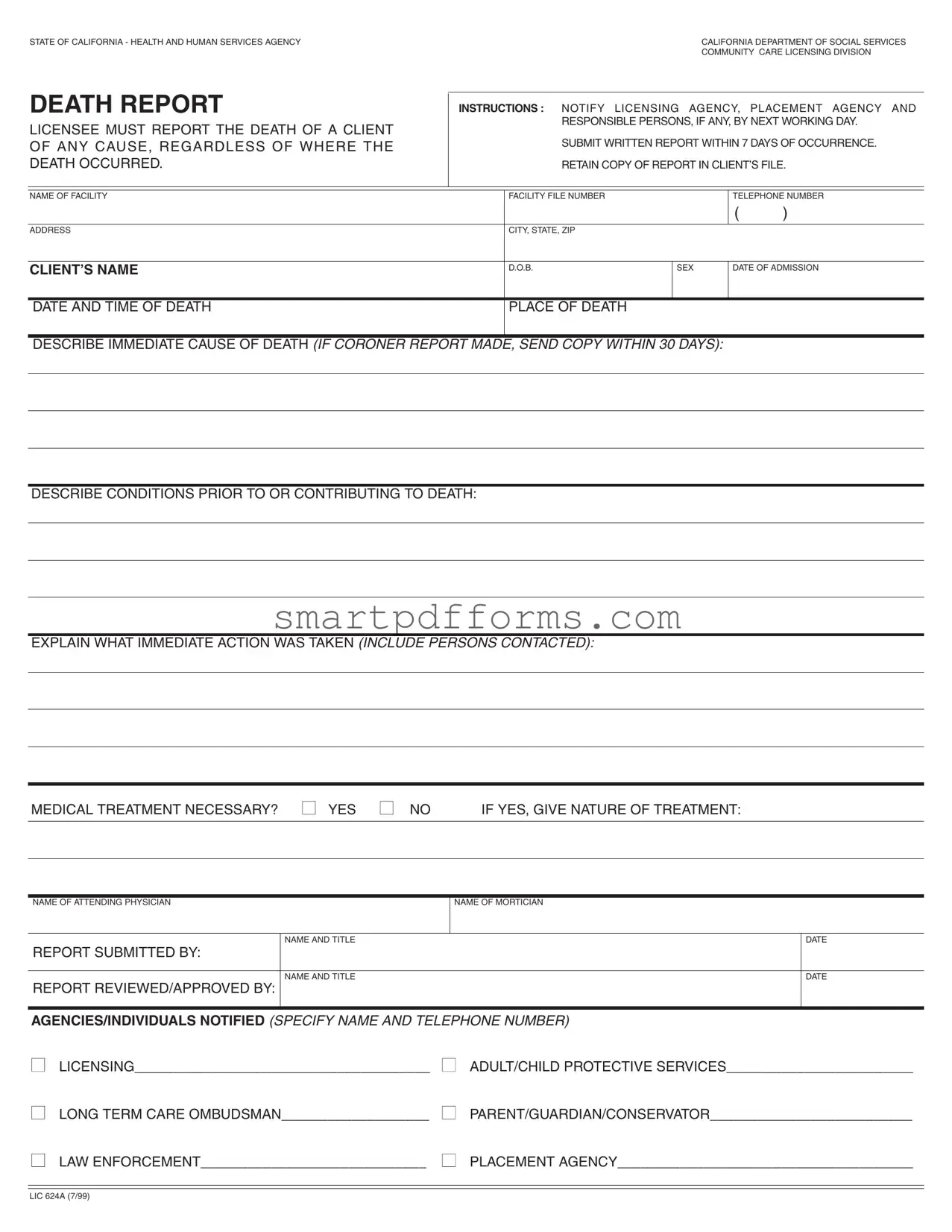In the meticulous framework of healthcare and social services, the oversight of facilities holding the responsibility for individuals under their care is paramount. The State of California, through its Health and Human Services Agency, addresses this need with a comprehensive procedural document known as the California Department of Social Services Community Care Licensing Division Death Report. This form mandates the swift notification and detailed reporting by facilities in the unfortunate event of a client's death. It ensures that the responsible entity, be it a licensing agency, placement agency, or the licensee itself, is promptly informed by the next working day, followed by a written account within seven days of the occurrence. This protocol applies regardless of the location or cause of death. The form seeks information including, but not limited to, the name and details of the deceased, date and place of death, immediate and contributing causes to the death, and actions taken post-death, including notifying relevant persons and agencies. It also queries on the necessity of medical treatment prior to death. Notably, it emphasizes accountability and due diligence by requiring a record of notification to entities such as licensing bodies, protective services, the Long Term Care Ombudsman, and law enforcement, thereby casting a wide net of responsibility and transparency surrounding the care of clients until their passing. This document underscores a commitment to dignity, care, and regulatory compliance in the sensitive matter of a client's death.

